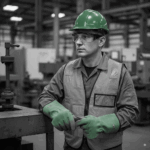The OSHA 6-foot rule for trenching refers to regulations that mandate specific safety measures for trenches and excavations that are 6 feet deep or deeper. This rule is designed to protect workers from the hazards associated with working in deep trenches, primarily focusing on two main areas:
1. Cave-in Protection: OSHA requires that any trench that is 5 feet (1.52 meters) deep or deeper must have a protective system in place to prevent cave-ins, unless the excavation is made entirely in stable rock. While the rule for cave-in protection starts at 5 feet, the 6-foot depth emphasizes the critical need for these protections as the depth increases, considering the greater risk of serious injury or fatality.
2. Fall Protection: For ternches that are 6 feet deep or deeper, OSHA mandates additional protections to prevent workers from falling into the trench or excavation. This may include providing guardrail systems, fences, barricades, or covers around the excavation site. The intent is to protect not only those working within the excavation but also those working around it, ensuring that accidental falls into the excavation are prevented.
These requirements are part of OSHA’s broader standards for trenching and excavation safety, covered under 29 CFR 1926 Subpart P. The standards outline various protective systems that can be used, including sloping, benching, shoring, and shielding (trench boxes), depending on the conditions and characteristics of the soil and the excavation site.
Employers are responsible for ensuring that a competent person, that has taken a competent person safety training course, evaluates the excavation site daily and as conditions change to determine the appropriate protective measures required. This competent person must have the knowledge to identify hazards and the authority to take corrective actions to eliminate them, ensuring the safety and health of workers involved in excavation activities.










